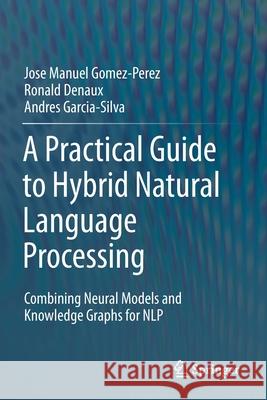A Practical Guide to Hybrid Natural Language Processing: Combining Neural Models and Knowledge Graphs for Nlp » książka
topmenu
A Practical Guide to Hybrid Natural Language Processing: Combining Neural Models and Knowledge Graphs for Nlp
ISBN-13: 9783030448325 / Angielski / Miękka / 2021 / 268 str.
A Practical Guide to Hybrid Natural Language Processing: Combining Neural Models and Knowledge Graphs for Nlp
ISBN-13: 9783030448325 / Angielski / Miękka / 2021 / 268 str.
cena 644,07
(netto: 613,40 VAT: 5%)
Najniższa cena z 30 dni: 616,85
(netto: 613,40 VAT: 5%)
Najniższa cena z 30 dni: 616,85
Termin realizacji zamówienia:
ok. 22 dni roboczych.
ok. 22 dni roboczych.
Darmowa dostawa!
Kategorie:
Kategorie BISAC:
Wydawca:
Springer
Język:
Angielski
ISBN-13:
9783030448325
Rok wydania:
2021
Wydanie:
2020
Ilość stron:
268
Waga:
0.41 kg
Wymiary:
23.39 x 15.6 x 1.57
Oprawa:
Miękka
Wolumenów:
01
Dodatkowe informacje:
Wydanie ilustrowane











